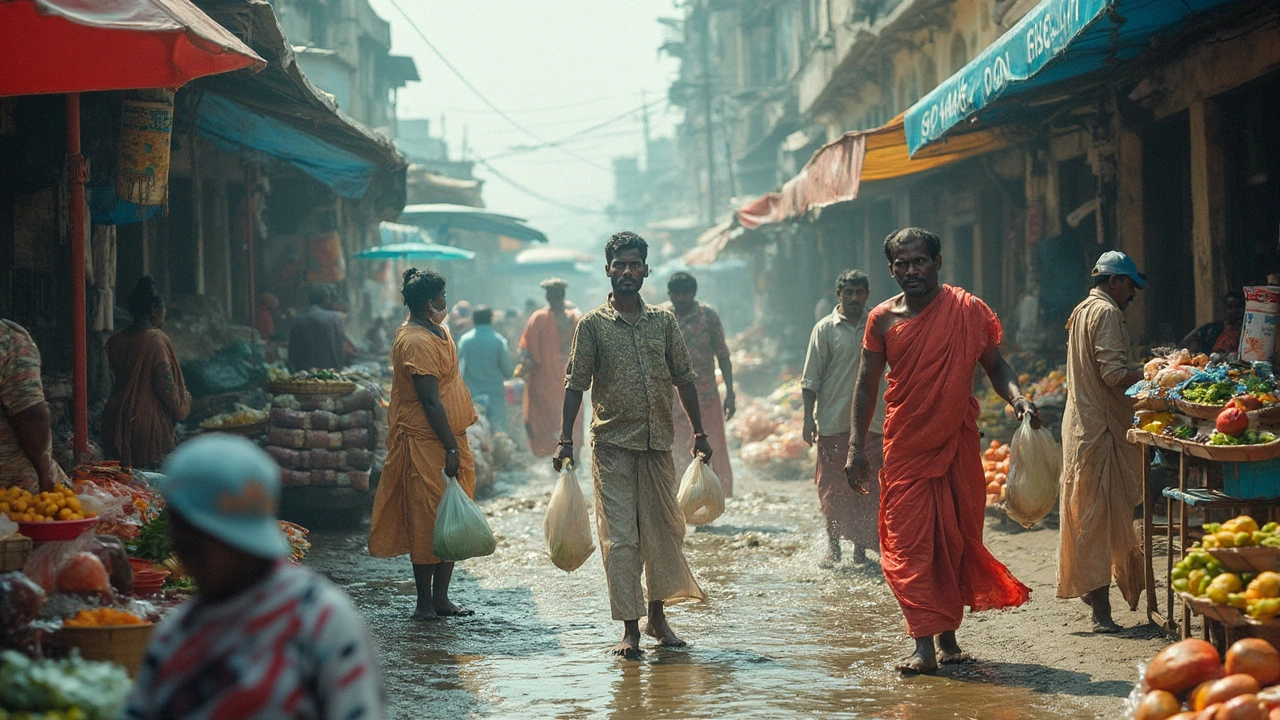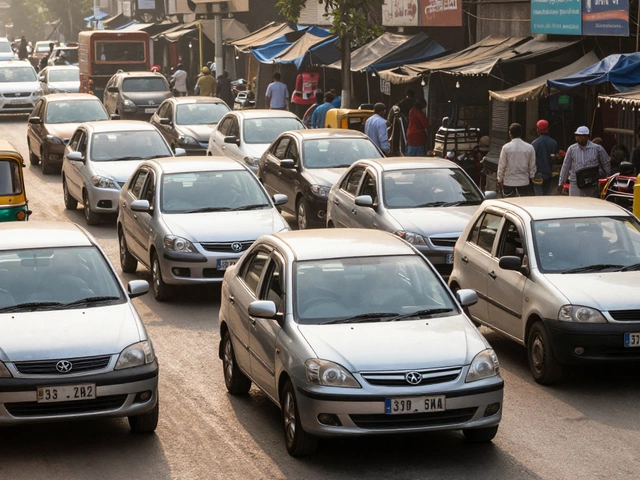Who’s Really Dumping Plastic in the Ocean? Shocking Facts and How It Happens

Picture this: you’re on a white sand beach. Instead of seashells, you find a faded shampoo bottle, a tangle of fishing gear, and bits of colored plastic. No, this isn’t just a third-world problem or a fluke after a storm. Every year, close to 11 million metric tons of plastic waste end up in the world’s oceans. That’s like dumping a garbage truck full of plastic into the sea every single minute—day and night. Everyone points fingers, but peeling back the layers tells a twisted, messy story. If you think it’s just lazy litterbugs or poor countries, guess again. This trash trail spans neighborhoods, mega-corporations, illegal dumpers, and even you and me. Ready to see who’s really filling the oceans with plastic?
The Biggest Offenders: Countries, Corporations, and Surprises
When you ask “who dumps plastic in the ocean,” most people imagine someone tossing a candy wrapper or perhaps countries with weak waste rules. The truth blows that image out of the water. Back in 2015, a now-famous study from the University of Georgia rocked people: researchers pinpointed ten countries whose mismanaged plastic wound up in oceans more than anyone else. The top five were China, Indonesia, the Philippines, Vietnam, and Sri Lanka. Why? Population size, rapid urban growth, and patchy waste management worked together to create the world’s top sources of plastic pollution. Here’s the twist though—much of this plastic was made by multinational companies from the US, Japan, and Europe. It’s their products, packaged for global sales, and often exported to countries less equipped to manage waste.
So, it’s not about blaming some faceless country. Think about how a British chip bag, manufactured in Spain, could end up floating next to a sea turtle off Manila. Plastic waste sneaks into the ocean every step of the way. Consider big companies like Coca-Cola, Nestlé, and PepsiCo. Audit after audit from groups like Break Free From Plastic found their labels on the most ocean-borne trash. A 2023 beach cleanup initiative spanned across 87 countries, and Coca-Cola-branded trash topped the charts on every continent. But these companies quickly point out that packaging gets where people want it; what happens next is often local mismanagement.
But don’t let high-profile villains grab all the blame. Illegal dumpers—sometimes businesses seeking to save disposal costs, sometimes organized criminals—regularly sneak containers of trash onto ships bound for places with laxer laws. In Southeast Asia, there’ve been scandals with entire shiploads of foreign plastic being misdeclared as recyclable, only to be dumped or burned.
And just like you may have guessed, it’s not all big fish. Little actions add up atom by atom. That plastic bag wafted out of a backyard bin by the wind, those microplastic beads in exfoliating face wash washed down the drain, and the lost fishing net abandoned out at sea. Each one becomes part of the great plastic migration toward the ocean.
| Country | Annual Plastic Waste to Ocean (tons) | Main Issues |
|---|---|---|
| China | 3.53 million | Poor recycling, population |
| Indonesia | 1.29 million | Open dumps, rivers |
| Philippines | 0.75 million | Littering, waste leaks |
| Vietnam | 0.73 million | Urban sprawl, illegal dumping |
| Sri Lanka | 0.64 million | Lack of infrastructure |
So, there’s our reality: a worldwide relay of plastic, touching hands from gagillionaires in boardrooms to overstretched city workers to families with nowhere to throw their stuff. No single culprit, just a tangle nobody imagined when plastic was “the future.”
How Does Plastic Actually Get to the Ocean?
If you live far from the coast, it might seem unreal that your trash bag could hang out with dolphins. Yet scientists at The Ocean Cleanup project used satellite tracking and hundreds of field studies to show plastic’s crazy journey from city to sea. Almost 80% of marine plastic starts on land, and rivers are the conveyor belts. Snaking their way through cities, rivers like the Yangtze in China and the Pasig in Manila function like highways for loose plastic. Each rainy season, floods sweep up trash from drains, sidewalks, and open dumps, hurling it toward the ocean.
Random fact: the world’s top 1,000 rivers carry 80% of all river-borne plastic into the ocean. But a handful are especially nasty. The Citarum River in Indonesia is so overloaded you might struggle to spot the water beneath the garbage. In Africa, the Nile funnels incredible amounts of plastic through Egypt’s cities into the Mediterranean. So it’s a global mess, but the worst rivers are plastic superhighways.
But rivers aren’t the only express lane. Stormwater drains and wind play sneaky roles. Light plastics, like bags or wrappers, hitch a ride with a breeze and land in storm drains. Maybe a bird grabs a straw from a landfill, chews it, drops it by a canal, and off it floats. One team in San Francisco found up to 50% of tiny plastics on beaches had blown in from trash cans or sidewalks, not been dumped at sea. Even the little rubbery pieces from car tires, after rain, wash into ditches, travel down rivers, and end up riding the currents.
Fishing, shipping, and tourism—these ocean-based activities bring their own plastic headaches. Nets get tangled or lost, nicknamed “ghost nets.” Containers fall off overloaded ships, spilling thousands of plastic toys or bottles. Tourists forget tents, chairs, and flip-flops, and tides carry them away. You even have microfibers from your favorite fleece jacket getting shed when you do laundry, slipping through treatment plants too small to filter them, and heading out with treated water. One study estimated that a single city’s laundries could pump millions of fibers into the sea every day.
Plastic doesn’t just float at the top, either. Some sink to the sea floor, forming deep-sea “plastic falls.” Deepwater robots have found plastic bags 35,000 feet down in the Mariana Trench, literally the ocean’s deepest spot. Your takeout container could take a wild ride, floating halfway across the planet before sinking miles below.
- Keep bins covered and always weigh down light plastic waste—those wrappers really do get airborne.
- Don’t flush anything plastic, ever—not even “flushable” wipes (they contain plastic). Every sewer feeds the story.
- Look for rain storms: after big ones, most beach trash doubles overnight!

Industries, Habits, and Systems Driving the Problem
To tackle ocean plastics, you have to rethink almost everything about how modern life is set up. The addiction to disposables is rooted deep. In the last fifty years, supermarkets, fast food chains, and even online shopping have shifted to single-use plastics. Every time you buy a snack, a toothbrush, or even an Amazon order, chances are some of the packaging is destined for the bin within minutes.
Corporations love the low cost of plastic—it’s light, easy to shape, and cheap to ship worldwide. They point out that plastic cuts food waste and spoilage. Still, that convenience comes with a long hangover. The United States, for example, is both one of the world’s top producers and consumers of plastic, but it sends boatloads of its plastic abroad for recycling. Sadly, watchdog groups have filmed imported recycling piling up in illegal dumps in Malaysia, Thailand, and Turkey. These dumps overflow, plastics wash into rivers, and the ocean picks up the rest.
Fishing contributes mountain-sized mounds of plastic too. Lost or abandoned fishing gear (nets, lines, traps) make up an estimated 10% of all ocean plastic. It drifts for decades, trapping marine life, entangling turtles, and “ghost fishing” long after the original owners have moved on.
Individual choices matter more than most people think. The global obsession with bottled water, single-use coffee cups, and takeout containers adds billions of disposable items every month. Plastic straws became a flashpoint because they’re glaringly wasteful and easy to replace, but they’re just the tip. Think of all the microbeads in personal care products. The US and UK banned them, but many developing countries still have face scrubs and toothpastes chock full of tiny plastics that escape water treatment and end up at sea. Washing synthetic clothes is another wild card—tiny threads make their way through laundry water and sneak past most filters.
Waste systems either slow the flood or open the floodgates. Rich countries often ship plastics overseas, sidestepping messy home landfills. Poorer countries, sometimes overwhelmed by imported foreign plastics, struggle with overflowing dumps, casual burning, and little recycling infrastructure. In some Asian cities, waste collectors (“scavengers”) gather valuable bottles, but the rest ends up near waterways.
Short-term fixes are everywhere, but making big changes means rewiring how we live. Deposit-return schemes (where you pay a little deposit and get it back for recycling) spike plastic return rates above 90% in Germany and Scandinavia. Bans on thin shopping bags in Bangladesh and Rwanda nearly wiped those plastics out. Taxes on single-use cups and bottles shrink use. Brands are experimenting with refillable containers, edible or compostable packaging, or plastics that can break down safely. All these ideas work, but only if businesses, governments, and shoppers pull weight together.
- Swap disposable plastics for reusables—cups, water bottles, shopping bags—one change saves thousands over a lifetime.
- Choose brands that use recycled or compostable packaging, and contact companies to push for more.
- Support local recycling or clean-up days, or try “plogging”—picking up trash while jogging.
- Wash synthetics in filter bags or use laundry balls to catch microfibers.
Tracing Your Plastic: Personal Impact and What You Can Do
It’s easy to tune out and blame faceless polluters on the other side of the world. But the research says that every piece of plastic has a story that might include you, even if you’re landlocked in a clean city with perfect curbside pickup. Ever heard of plastic “footprints”? Just like carbon, every choice you make leaves a trace. The European Environment Agency calculated that the average European uses about 31 kg (almost 70 pounds) of plastic packaging a year. Of that, much is recycled, but millions of tons still “leak”—meaning, they slip through cracks in the system, escape into nature, and drift toward the sea.
If you’ve ever tossed a wrapper on the street, watched a bin overflow, or noticed that city storm drains don’t have grates, those are plastic’s escape routes. It doesn’t always go far; some gets caught in trees or bushes. But wind, rain, and animals work tirelessly to nudge it onward. You’d be surprised how far a chip bag can travel. A report by National Geographic found that a snack bag thrown away in Chicago could, in theory, make its way through storm drains, down the Chicago River, and out to the Gulf of Mexico—a journey of over 1,000 miles. Satellite trackers attached to plastic bottles have documented similar epic trips.
Your choices do stack up. Drinking from a reusable water bottle prevents hundreds of disposables each year. Skipping plastic-wrapped veggies in favor of loose ones slices your waste pile. Refusing straws and single-use cutlery altogether is a tiny habit that multiplies if your friends catch on. Curious about where your local plastic ends up? Ask your city waste team if they export it overseas or process locally. Find beach or river clean-up crews—firsthand, you’ll see both foreign and local brands, proof it’s everyone’s issue.
- Refuse single-use plastics whenever given the option, especially at restaurants and stores.
- Carry a reusable shopping kit (bag, travel mug, cutlery) whenever you’re out.
- Check if your city storm drains have litter traps; if not, suggest it to your local council.
- Join or organize local clean-ups, even a walk around your block counts.
- If you see illegal dumping, report it—it’s a fast way to curb the worst leaks.
Got kids or nieces and nephews? Teach them where plastics go, from the bin to the river to the sea. Start fixing micro-habits—like always picking up stray trash, rinsing recyclables, and double-checking what you put in the blue bin. These might seem tiny, but remember: 11 million tons a year is billions of mindless moments stacked together. Flip even a few of those, and ocean life gets a breather.
No superhero is sweeping in to fix this alone. But you can join the global relay—this time, in reverse. Next time you see a bit of plastic headed for a drain or a river, rescue it. Maybe that bottle never sees the ocean—and isn’t that a story worth being part of?





